Course:HIST104/Dentyne Gum
| History 104 | |
|---|---|
| [[1]] | |
| HIST 104 | |
| Section: | 99C |
| Instructor: | Joy Dixon |
| Email: | |
| Office: | |
| Office Hours: | |
| Class Schedule: | |
| Classroom: | |
| Important Course Pages | |
| Syllabus | |
| Lecture Notes | |
| Assignments | |
| Course Discussion | |
Dentyne gum (a combination of the words “dental” and “hygiene”) was created and introduced by Franklin V. Canning in 1899. The New York City druggist promoted his gum as a beneficial aid in oral hygiene. It was the first chewing gum product to make such claims. When Dentyne was first advertised in 1956, it was known as the gum that “brushes your breath” and early slogans included “the gum that cleans teeth” and its package read “to prevent decay, to sweeten the breath, to keep teeth white”, emphasizing Canning's claims of improving oral hygiene. Dentyne was also the first pink-coloured gum product offered in a slab, or stick, format and in 1997 with the introduction of Dentyne Ice, Dentyne became the first gum available in the pellet format, uncommon for the time and sold in a unique blister package [1].
Types of Gum
Gum is a food additive made from either natural latex (such as the resin of mastic trees, chicle, sap from spruce trees, etc) or synthetic rubber.[2] The consumption of gum is driven by a commercial (or cultural) practice of chewing, and is usually chewed as a mouth freshener. However, the commercialization of gum generated many other functions for it as well. Today, gum may be confectionery, playful, functional, or medical.
Basically, gum is produced from a combination of gum-base, sweeteners, flavorings, and food colorings, all of which may be varied, thus allowing gum to be produced in many different forms.[3]
Gum Balls

Gumballs are made by first scoring them into cylinder shapes, and then they are put into a specialized machine that processes them into ball-shapes after. The next step is to store them at a temperature of 55 to 60 degrees to harden their outer cores, which are later coated by various flavored and colored sucrose solutions. Preceding the sugar-coating process, gumballs are then rolled in beeswax to produce their shiny appearance.[4] Gumballs are hard on the outside (which sometimes are difficult to bite into), but soft on the inside, where the gum is. Gumballs are usually consumed as a confection and are dispensed by vending gum-machines. Below is a video from the Discovery Channel on how gumball machines are made.
Bubble Gum

Bubble gum is made especially for blowing bubbles. This type of gum was invented by Walter E. Diemer and is most famous as the Dubble Bubble product.[5] Following his creation, Diemer himself had to teach his salesmen how to blow bubbles from gum in order to make his invention a success. Bubble gum is less sticky than regular chewing gum, and it also stretched more easily. During the time of its creation, the factory where Diemer worked at only had pink food coloring, and thus most bubble gum today is still pink.[6]
Candy Gum
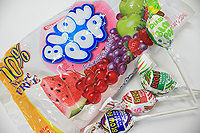
Candy gum is simply candy with bubble gum in its inner-core.[7] A popular example would be the lollipop phenomenon, Charms Blow Pop. This type of confection is made by surrounding a small piece of bubble gum with a shell of hard candy, which usually comes in different fruit flavors.[8]
Functional Gum
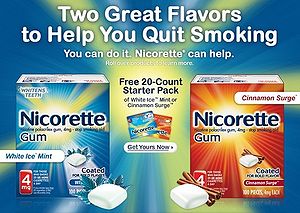
Gum has also evolved from a non-functional sweet to a functional snack. Functional gum, as the name implies, has a practical function[9], meaning that it is not consumed simply for flavors or fun. For instance, Nicorette, or nicotine gum, is a functional gum that is used to deliver nicotine into the body.[10] Nicotine gum assists smokers to quit smoking. It is used to replace some of the nicotine that the smoker no longer receives through cigarettes by reducing the symptoms of nicotine withdrawal.[11] Nicorette is formed the same way as a chewing gum, but because of its inclusion of nicotine within the gum, it may taste more unpleasant. However, the cigarette taste could still be covered by an extra coating of flavor, which are available in mint or cinnamon.
Medical Gum
Gum has also evolved into a medical tool; medical gum, or medicated gum, is used as a faster drug delivery system than pills (through the introduction of saliva).[12] Like nicotine gum, medical gum is also in the same form as regular chewing gum. Medicated gum is available for pain relief, minor illnesses, and vitamin or mineral supplements.[13] They are described as...
- "Solid, single dose preparations with a base consisting mainly of gum that are intended to be chewed but not swallowed. They contain one or more active substances which are released by chewing and are intended to be used for local treatment of mouth diseases or systematic delivery after absorption through buccal mucosa.”[14]
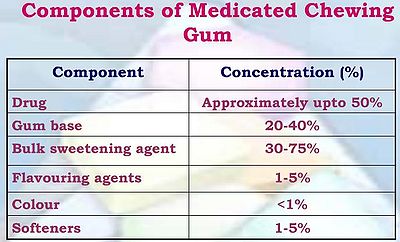
Sugar-Free Gum
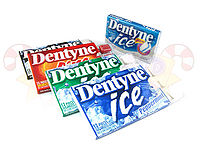
The most common type of gum is sugar-free gum. Chewing sugar-free gum stimulates the production of saliva. The increase of saliva assists the washing away of food particles, neutralizes plaque acids in the mouth, balances the pH after eating, and remineralizes tooth enamel.[15] Dentyne gum is an example of sugar-free gum. Not only does sugar-free gum improve oral health and help prevent cavities, but it is also flavored to freshen one's mouth.[16] Some sugar-free gum also contains teeth-whitening agents. Many dental studies show that chewing sugar-free gum immediately after meals can help reduce the risk of tooth decay by up to 40%.[17]
Flavors
Mint
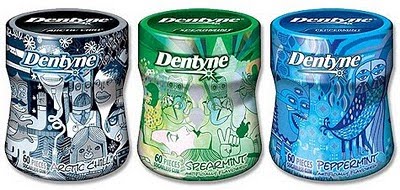
The word mint comes from the Latin word Mentha, meaning “the beautiful nymph Minthe.”[18] In the Medieval Times, people used mint to wash their faces and get rid of fleas. The Greeks used mint in various herbal treatments and they were convinced that it could clear one's voice and cure hiccups. They would chew on a peppermint leaf to relax and refresh. Since the eighteenth century, mint has been an important medicinal herb. Some of its uses include getting rid of odor, relieving indigestion, curing headaches and preventing heartburn.[19]
The first known existence of mint is under debate. According to some, mint became well-known when a peppermint plant known as Menthapiperita L. first appeared in 1696. Other historians claim that the first peppermint variation, peppermint oil, already existed before prehistoric time, as early as 410 A.D. Ancient Egyptians believed that the dried leaves found in the pyramids were composed of peppermint oil. Some believed that peppermint came to the New World with the colonists and that the first known cultivation of peppermint was recorded in 1750.[20]
In 1796, a hybrid of the peppermint oil was invented in England, rapidly increasing the popularity and usage of the herb. It became one of the world’s greatest products, resulting in approximately “12,000 pounds of oil”[21]. In North America, the first cultivation of mint was in Massachusetts in 1812. From there, the production of mint eventually moved to New York, which became the largest peppermint oil producer. Peppermint plants were also produced on the Indiana-Michigan border.[22]
As peppermint production became more popular, mint started being used for various purposes like adding flavor to food, candy, gum and other sweet treats. Commercially prepared oil was used to add flavoring rather than the actual leaves since the leaves and the stem tend to be bitter. Mint flavor is one of the most common and popular flavors of gum. The strong scent removes bad breath odors and provides a refreshing taste. It is its lasting taste and pleasing smell that makes it the most sought-after flavor in chewing gums such as Dentyne.
Other
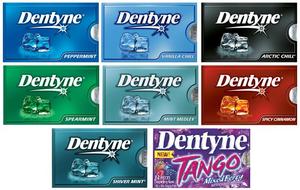
Dentyne currently sells 12 varieties of gum, as well as two flavors of mints. Dentyne recently came out with Dentyne Pure, which Dentyne claims will neutralize bad breath rather than simply covering it up. Dentyne Pure comes in Mint with Melon Accents, as well as Mint with Herbal Accents. Dentyne Ice, another product from Dentyne, comes in Shiver Mint, Vanilla Chill, Peppermint, Spearmint, Arctic Chill, and Mint Medley. Dentyne Fire is offered in Spicy Cinnamon, the only flavor in the Dentyne Fire line. Lastly, Dentyne Ice Mints are offered in Peppermint and Spicy Cinnamon Flavors[23].
Production
The International Chewing Gum Association outlines the basic steps on how gum is made, including melting the gum base ingredients, adding sugar, glucose syrup, flavoring and “other ingredients,” using extrudes to blend and form the gum, shaping the gum, sprinkling the gum with sweetener, cooling it, coating it, and wrapping it[24].

Most companies producing chewing gum utilize the same basic ingredients and process for gum manufacturing. A gum base, sweeteners, and flavorings are combined with softeners such as glycerin and vegetable oil to create a desirable texture. Historically, gum base used to consist of the chicle of the sapodilla tree found in Mexico and Guatemala. Presently, however, gum base is more likely to be manufactured. Once the gum base is prepared at the factory, approximately 20% of it is combined with 63% sugar, 16% corn syrup, and 1% flavoring oils. After this step, the warm mixture is run between rollers coated with powdered sugar. Lastly, machines are used to cut the mixture as well as to package it[25]. Gum that is candy coated, such as Dentyne, is sprayed with liquid sweetener repeatedly in order to create a hard candy shell[26].
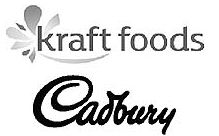
Cadbury, the company currently producing Dentyne, is part of the International Chewing Gum Association. Dentyne was purchased by Cadbury Schweppes in 2002, after being owned by the Warner-Lambert Company, Chicle Company, and Adams Gum Company[27]. In February of 2010, Kraft Foods Company purchased Cadbury, adopting all of Cadbury's brands, including Dentyne. Kraft stocks sit at $31.26 as of March 27, 2011[28]. According to a 2010 article in business week, Dentyne is one of ‘America’s 25 Favorite Candies’, with annual sales of $90.9 million[29].
Advertising
With a gum named by combining the words “dental” and “hygiene,”[30] the focus of the company’s advertisements is on the importance of freshening your breath with its product. In the United States, the chewing gum industry totals sales of over $2 billion a year and averages out to more than 190 sticks of gum per person each year[31]. Dentyne gum is purchased by consumers of all ages, but people under twenty constitute the biggest marker[32]. William Wrigley Jr., founder of the William Wrigley Jr. Company, said, “Anybody can make gum; the trick is to sell it”[33].
Advertising in the Twentieth Century

Originally, Dentyne gum was advertised through print. An early example of a Dentyne print ad is a 1940 advertisement claiming Dentyne gum is “mouth healthy” (right). With the commercialization of television sets, Dentyne gum now advertises through TV commercials in addition to print ads. Starting with its first commercial in 1956 and for the following forty years, Dentyne emphasized its gum as a substitute to mouthwash and toothpaste by campaigning Dentyne as a gum that “brushes your breath” through over twenty-five TV ad campaigns[34]. Dentyne then changed its angle when it launched Dentyne Ice in 1997 and for the next six years advertised Dentyne Ice as icy cold[35], using taglines such as, “Ice at its coldest.”
It appears that Dentyne’s marketing styles have adapted over the years to align with popular culture. One advertisement, pictured below, would be unacceptable in today’s culture since it contains racially offensive references. However, at the time of its publication, it appealed to the mainstream culture and likely advanced the brand. Similarly, some of the advertisements used by Dentyne today, such as the more sexually charged images, would likely have been equally as offensive in earlier years.
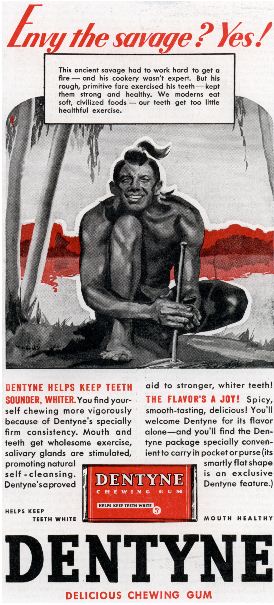
Advertising in the Twenty-first Century
With the growing prominence of technology, Dentyne played off of the new generation’s dependence on technology to suggest Dentyne gum as a connection between the technological and the outside world. This “make face time” campaign, launched in 2008, involved television commercials, print advertisements, and an interactive website that users could only access for three minutes at a time. Print advertisements utilized references to technology, such as the slogan “the original instant message” accompanying an image of a couple kissing, or “friend request accepted” with two friends embracing[36]. A commercial shows similar images and slogans, such as a group of friends hanging out accompanied by the words, “chatroom full.” Craig Marcus, an executive creative director at McCann Erickson, the advertising company responsible for the campaign, noted that gum makes “those moments more special...Gum makes kissing better, conversation better, it wakes us up a little bit, refreshes our mouths."[37] This method of emphasizing important relationships, and Dentyne’s involvement in those relationships, was a deviation from Dentyne’s traditional advertising style promoting Dentyne as a way of having healthy teeth.

However, Dentyne returned to its emphasis on the importance of clean, fresh breath in romantic relationships with its “Practice Safe Breath” campaign for Dentyne Ice launched in 2010. Television commercials for this campaign show couples becoming intimate, but not before they pull out their packet of Dentyne Ice gum. Here, Dentyne is suggesting that having fresh breath is crucial for becoming intimate and the way to have fresh breath is to purchase their product. Early in 2011, Dentyne teamed up with comedian Marlon Wayans to launch a similar campaign for Dentyne Pure called the “Safe Breath Alliance.” This campaign portrays Dentyne as a movement “dedicated to putting an end to unsafe breath”[38]; by purchasing Dentyne Pure gum, “you can give 12 people the safest breath they’ve ever had”[39]. This campaign again utilizes technology, in this case with its Facebook fanpage where people can join the Safe Breath Alliance, a made-up organization to promote safe breath. The pictures displayed on Dentyne’s main Facebook page hint at an element of sexuality, utilizing attractive individuals in suggestive clothing and positions, which illustrates the way that Dentyne is now marketing its product, namely, through technology and sexuality.
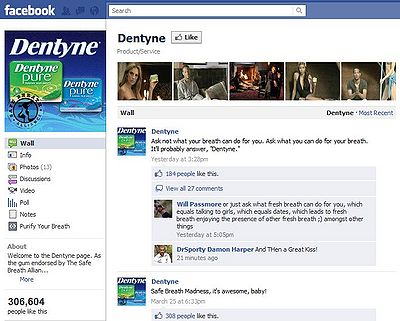
References:
- ↑ "Dentyne." Cadbury. Retrieved from http://collaboration.cadbury.com/allaboutus/ourbrands/featurebrands/Pages/Dentyne2.aspx.
- ↑ Wikipedia contributors, "Chewing gum," Wikipedia, The Free Encyclopedia, http://en.wikipedia.org/wiki/Chewing_gum (accessed March 23, 2011).
- ↑ "Different Types of Chewing Gum." I Love India. Retrieved from http://lifestyle.iloveindia.com/lounge/different-types-of-chewing-gum-2406.html.
- ↑ "How Gumballs Are Made." Gumballs.com. Retrieved from http://www.gumballs.com/how-gumballs-are-made.html.
- ↑ "Fascinating facts about the invention of Bubble Gum by Walter Diemer in 1928." The Great Idea Finder. Retrieved from http://www.ideafinder.com/history/inventions/bubblegum.htm.
- ↑ "Fascinating facts about the invention of Bubble Gum by Walter Diemer in 1928." The Great Idea Finder. Retrieved from http://www.ideafinder.com/history/inventions/bubblegum.htm.
- ↑ "Different Types of Chewing Gum." I Love India. Retrieved from http://lifestyle.iloveindia.com/lounge/different-types-of-chewing-gum-2406.html.
- ↑ "Charms Blow Pops." Tootsie Roll Industries. Retrieved from http://www.tootsie.com/products.php?pid=119.
- ↑ "Different Types of Chewing Gum." I Love India. Retrieved from http://lifestyle.iloveindia.com/lounge/different-types-of-chewing-gum-2406.html.
- ↑ Wikipedia contributors, "Nicotine gum," Wikipedia, The Free Encyclopedia, http://en.wikipedia.org/wiki/Nicotine_gum (accessed March 26, 2011).
- ↑ "Nicorette Gum." Canada.com: Body and Health. Retrieved from http://bodyandhealth.canada.com/channel_drug_info_details.asp?brand_name_id=1938&channel_id=2022&relation_id=16707.
- ↑ "Medicated Chewing Gum (MCG) as Drug Delivery System." DocStoc. Retrieved from http://www.docstoc.com/docs/12497880/medicated-chewing-gum.
- ↑ "Medicated Chewing Gum (MCG) as Drug Delivery System." DocStoc. Retrieved from http://www.docstoc.com/docs/12497880/medicated-chewing-gum.
- ↑ "Medicated Chewing Gum (MCG) as Drug Delivery System." DocStoc. Retrieved from http://www.docstoc.com/docs/12497880/medicated-chewing-gum.
- ↑ "Wrigley's Sugarfree Gum." BetterOralHealth. Retrieved from http://www.betteroralhealth.info/orbit_us/about-wrigley/frequently-asked-questions/wrigleys-sugarfree-gum/index.htm.
- ↑ "What Is Sugar Free Chewing Gum?" Wise Geek. Retrieved from http://www.wisegeek.com/what-is-sugar-free-chewing-gum.htm.
- ↑ "Wrigley's Sugarfree Gum." BetterOralHealth. Retrieved from http://www.betteroralhealth.info/orbit_us/about-wrigley/frequently-asked-questions/wrigleys-sugarfree-gum/index.htm.
- ↑ NaturalPedia, "Quotes about Minthe from the world's top natural health / natural living authors,"http://www.naturalpedia.com/Minthe.html" (accessed 30 March 2011).
- ↑ Sally Painter. "History of Peppermint." http://herbs.lovetoknow.com/History_of_Peppermint (accessed 30 March 2011).
- ↑ N. K. Ellis, "Peppermint and Spearmint Production, "Economic Botany", 14, 4 (Oct.-Dec.,1960):280. http://www.jstor.org/stable/4252193 (accessed 30 March 2011).
- ↑ N. K. Ellis, "Peppermint and Spearmint Production, "Economic Botany," 14, 4 (Oct.-Dec.,1960):280. http://www.jstor.org/stable/4252193 (accessed 30 March 2011).
- ↑ N. K. Ellis, "Peppermint and Spearmint Production, "Economic Botany," 14, 4 (Oct.-Dec.,1960):280. http://www.jstor.org/stable/4252193 (accessed 30 March 2011).
- ↑ “Dentyne Products.” Dentyne. http://dentyne.com/Products.aspx. (accessed March 27, 2010).
- ↑ "How Gum Is Made". International Chewing Gum Association. http://www.gumassociation.org/default.aspx. (accessed March 27, 2010).
- ↑ "How is Chewing Gum Made?". Cool Quiz. http://www.coolquiz.com/trivia/explain/docs/gum.asp. (accessed March 27, 2010).
- ↑ "How Gum Is Made". International Chewing Gum Association. http://www.gumassociation.org/default.aspx. (accessed March 27, 2010).
- ↑ "Dentyne Chewing Gum". Victory Seeds. http://www.victoryseeds.com/gum_dentyne.html. (accessed March 27, 2010).
- ↑ "Investing in Brands People Love". Kraft Foods Company. http://www.kraftfoodscompany.com/Investor/index.aspx. (accessed March 27, 2010).
- ↑ "America's 25 Favorite Candies". Business Week. http://images.businessweek.com/ss/09/10/1021_americas_25_top_selling_candies/4.htm. (accessed March 27, 2010).
- ↑ "Dentyne." Cadbury. Retrieved from http://collaboration.cadbury.com/allaboutus/ourbrands/featurebrands/Pages/Dentyne2.aspx.
- ↑ Blery, Evangelia K. and Antoniades, Loukas (2010). "Marketing Chewing Gum: A Case Study of a Cypriot Company." Journal of Food Products Marketing, 16:4, 337-349. Retrieved from http://dx.doi.org/10.1080/10454446.2010.509227.
- ↑ Miller, Claire Cain (2008, Sept 24). "Get Off the Internet, and Chew Some Gum." The New York Times. Retrieved from http://www.nytimes.com/2008/09/25/business/media/25adco.html?_r=1.
- ↑ Blery, Evangelia K. and Antoniades, Loukas (2010). "Marketing Chewing Gum: A Case Study of a Cypriot Company." Journal of Food Products Marketing, 16:4, 337-349. Retrieved from http://dx.doi.org/10.1080/10454446.2010.509227.
- ↑ "Dentyne." Cadbury. Retrieved from http://collaboration.cadbury.com/allaboutus/ourbrands/featurebrands/Pages/Dentyne2.aspx.
- ↑ "Dentyne." Cadbury. Retrieved from http://collaboration.cadbury.com/allaboutus/ourbrands/featurebrands/Pages/Dentyne2.aspx.
- ↑ Miller, Claire Cain (2008, Sept 24). "Get Off the Internet, and Chew Some Gum." The New York Times. Retrieved from http://www.nytimes.com/2008/09/25/business/media/25adco.html?_r=1.
- ↑ Chaudhuri, Saabira (2008, Oct 9). "Log Off, Latch On, Make Facetime: Dentyne's New Campaign Turns Heads." Fast Company. Retrieved from http://www.fastcompany.com/blog/saabira-chaudhuri/itinerant-mind/log-latch-make-facetime-dentynes-new-campaign-turns-heads.
- ↑ "Dentyne (Info)." Facebook. Retrieved from http://www.facebook.com/Dentyne?sk=info.
- ↑ "Dentyne (Info)." Facebook. Retrieved from http://www.facebook.com/Dentyne?sk=info.
